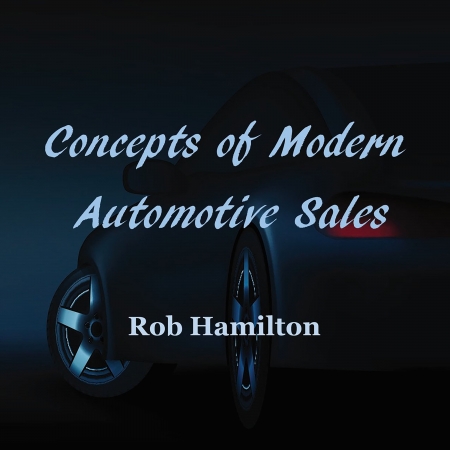How to Qualify, Assess Needs, and Trial Close
I know that most in the industry would agree that uniting your customers with the right sales consultant is vital to the harmony and moral of your retail facility. Qualification can go a lot deeper and have a few more nuances than just asking if the customer is here to “see anyone in particular” or “if they have an appointment.”
The first of these questions, by the way, is not particularly effective and the second can certainly be a direct put-off. And while our receptionists/greeters (if you have them at your facility) might be trained a bit and do a nice job with our guests, it is the sales consultant’s responsibility to properly qualify each and every customer – without exception. Here’s the big thing we need to overcome: It is far too easy and natural to assume the customer is new or available when paged to the desk to help. We make the assumption, subconsciously more often than not, that the qualification must have come out in the initial exchange between the greeter and customer. We assume that the proper questions were asked or that the customer somehow made it clear that they have not been here before or not worked with anyone at our location. We must begin to think differently now. Here are some qualifying question that should be asked (or, at least, the answers known) every time we meet a customer for the first time.
“Have you been here before? Perhaps purchased a vehicle here?”
Clearly, if the answer is “yes” to either of these, you will attempt to get the customer with the sales consultant (you certainly hope, although I think we’ve all had it happen before, that the consultant was not you. If the answer is “no,” these second set of questions should be asked.
“What brings you in today? Were you referred to us by a friend or family member?”
This will do a couple of things. One, it gives you another opportunity to discover if the customer is indeed here to see someone in particular (without asking the question in direct form). Secondly, it plants the seed that we must receive a great deal of referrals. After all, if they were not extremely commonplace, we would not be compelled to ask.
The next question, hopefully put forth as you are moving toward your desk where a proper interview or needs assessment will take place, is the following:
“What would you like to accomplish today?”
This will get you to a starting point, more often than not. And this starting point can be as perfect as the customer wanting to tell you needs and wants up front and then leading to a great presentation (textbook road to the sale), or it can be “Gimme yer best price on an Accord!” How we handle the latter will be a subject in the very near future. The former, though, or anything similar to that, will open up the next step with this, almost as an aside while moving toward your desk.
“So what piqued (if you prefer not to use “piqued,” I get it – go with something similar) your interest in the Accord, John? Did you see one on the road and were attracted by its look or does someone you know own one?”
We will then follow with Positive Value Statements or Pre-emptive Strikes. These are defined and demonstrated in “Beyond the Walkaround.”
At any rate, we would now like to move into the Interview or Needs Assessment.
This needn’t be an interrogation. In fact, if the customer feels such is becoming the case, the comfort level will drop quickly and you will have little opportunity to get it back. Here are a few keys to success…
- Allow the customer to respond and you LISTEN.
- Do not talk about yourself.
- Smile and ask questions with genuine care and interest.
Now, let’s go over the necessary information you must try to secure prior to quoting numbers of any kind (yes, this includes any published prices or specials!).
VEHICLE
We need to make certain that we are on the correct vehicle. The color, equipment, all the hot buttons. Follow any acronym you have been taught, ex. SPACED – Safety, Performance, Comfort and Convenience, Economy, Dependability. Provide the customer with a world-class presentation and have them drive the vehicle they wish to own.
It is also not a bad thing to ask the customer if they are considering other options. If it’s me, I’d want to know what I’m up against early. This way, must presentation can be tailored to this and more effective.
BUDGET
True, we are not financial consultants. But, if we are able to learn a true idea of budget and WHY the customer must stay within this, we will be in a better place to be sure. Now, the budget can have a total dollar goal or a payment goal. Be careful that they are not the same and the customer simply has a misconception about how this translates to payment. For now, it’s enough for you to know that if you go to the sales desk with the statement that the customer has to be under $20,000 and you are asked “Why?” you should know. Is it truly total dollars? Did the customer’s bank tell them that 20K was all that they qualified for? Does this figure represent a payment? What terms would those be and who quoted them? Drill down. It will help you counter concerns (coming soon!).
TRADE-IN
Yes, I know that a percentage of our customers are trained or coached to withhold the trade until a price has been secured. We need to overcome this whenever possible. Find out if there is a trade and a pay-off. Ah, the pay-off. What if the customer does not wish to divulge this either? Appeal to the fact that you are only here to be of service and that the customer is under no obligation to buy. And since there is no relationship between what is owed and what the vehicle is worth, there is no point is keeping the information to oneself. In fact, it is required to quote a payment.
Asking for expectations with respect to trade-in value was, and still is, frown upon by some. The reasoning is that if the customer throws out a number and nothing is said until the appraisal, there is the assumption that the value can be met. I’d rather know and counter this early.
TIME-FRAME
Leading into a trial-close opportunity, and understanding that no matter what the answer, you must still ask for the business multiple times, getting a time-frame out of your customer is a necessity. If the customer says “Why would you ask?” or “Why do you need to know?” you respond with the following:
“John, it is just for your benefit. Our incentives do change and some are diminishing assets. I want to make sure you have accurate information.”
This should certainly warrant a response, an “I understand” or a “What do you mean?” As with all counters, the “I understand” is the goal. A “What do you mean?” opens up a dialogue, during which we will build value and/or justify our dollars or position.
Moving on to the trial-close…
“John, if we can work this out from a financial standpoint, and I’m sure we will, is this something you would like to do today?”
Simple, easy, straight-forward, and non-confrontational. This does not have to be done after the return from the demonstration, though, in a perfect world, that would be wonderful. Likewise, if we jump directly to numbers because we receive a thumbs-up to this statement prior to our building of value and the driving of the unit, we are shooting ourselves in the foot.
Trial closes can be used at almost any time should the situation call for one. An example would be that the customer demands your best price on the vehicle before you have a chance to do a needs assessment, presentation, or demonstration. So, what to do with the “Gimme yer best price!” guy? Try this…
“John, I will gladly give you a wonderful price on this vehicle, provided it is one you would like to own (Price Counter ). How did you become interested in the Accord? Did you see one on the road or does a friend own one?” (Transition to Needs Assessment)
Hopefully, this will begin the Interview for you. If not… “My buddy has one. Just gimme yer best price!”
“Of course, we won’t lose a deal (your business) over dollars (Price Counter). In fact, understanding that we all pay the same for these vehicles, is this something you would like to do today if it all works out from a budget standpoint? “(Transition to Trial Close)
We can take this to many levels, and we will. For now though, please continue to use these ideas on a daily basis. We will all be far more effective, but it takes practice. Until next time…
Beyond the Walkaround
Kindle Edition available through Amazon
Free Kindle reading app available for all devices.







